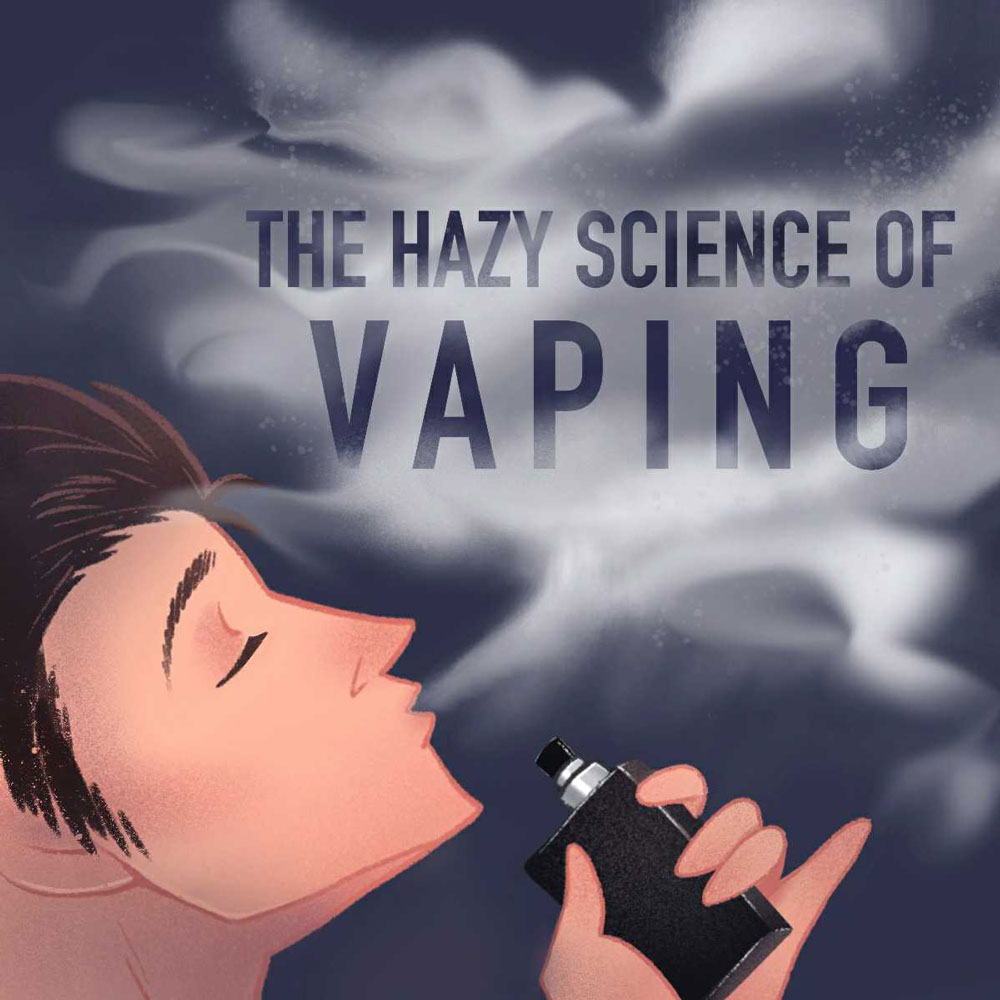
Written by Vivian Wang
Illustrated by Christina Trinh
Over the past year, vaping has risen to become a major public health concern. The outbreak of vaping-related illnesses has affected over 2,000 people and killed at least 39 in the US alone, yet experts aren’t able to confirm which specific products are at fault and how they affect the body. What does vaping really do to our health? And what makes the science of vaping so difficult to tackle?
We can start by understanding the process of vaping. Vaping typically involves a glass or metal chamber with an electric current passing through it. The chamber heats up a liquid into vapor which is then breathed in by the user. The most common devices that do this are e-cigarettes and vaporizers. Their liquid contents—also called ‘e-juice’—contain a variety of chemicals including nicotine (the addictive drug in tobacco) and come in many different flavours. Some products may also contain THC, the main psychoactive chemical in cannabis, which has recently been suggested to play a major role in vaping-related illnesses.
For people who are trying to quit smoking, vaping is considered the safer alternative; vaping devices produce much less smoke than regular cigarettes so users inhale much less carcinogenic products. But despite these benefits, experts emphasize that vaping is still harmful to the body! Several flavourings and chemicals in e-juice like formaldehyde have been linked to toxicity and higher cancer risks. Plus, e-juice ingredients are still mostly unregulated in Canada and the US, further complicating the search for the potential causes of the recent outbreak. And on top of all that, second-hand smoke is still an issue; exhaling vapor releases fine particles that can damage the lungs when breathed in.
While there are now several decades’ worth of research on the health effects of tobacco cigarettes, vaping products are relatively recent. Currently, we simply don’t know enough about the long-term effects of vaping—experts can’t even confirm if the vaping-related symptoms point to long-term lung illnesses! Last month, the US Center for Disease Control and Prevention even announced that they were now referring to these cases as “EVALI”, an acronym that stands for ‘e-cigarette, or vaping, product use associated lung injury’.
On the regulatory side of vaping, lawmakers are also trying to catch up. Efforts are being made to increase the regulation of the vaping industry and to restrict certain products. Concerned about the growing popularity of vaping among teens, Health Canada banned youth-targeted ads and may consider prohibiting some flavours. However, as experts point out, we need to first establish the research necessary to guide future regulation. So until we clear up the science behind vaping, the safest choice is to stay away!
Sources:
- https://www.nature.com/articles/d41586-019-03033-1https://www.health.harvard.edu/blog/can-vaping-damage-your-lungs-what-we-do-and-dont-know-2019090417734
- https://newsinhealth.nih.gov/2019/02/vaping-rises-among-teens
- https://www.vox.com/2019/11/22/20977418/vaping-lung-disease-ban-public-health
- https://www.theverge.com/2019/10/8/20899114/vaping-lung-injury-seizures-explosions-e-cigarette-youth-vaping-flavor-bans
- https://www.cbc.ca/news/health/the-science-behind-why-vaping-is-becoming-so-popular-in-canada-1.5290520